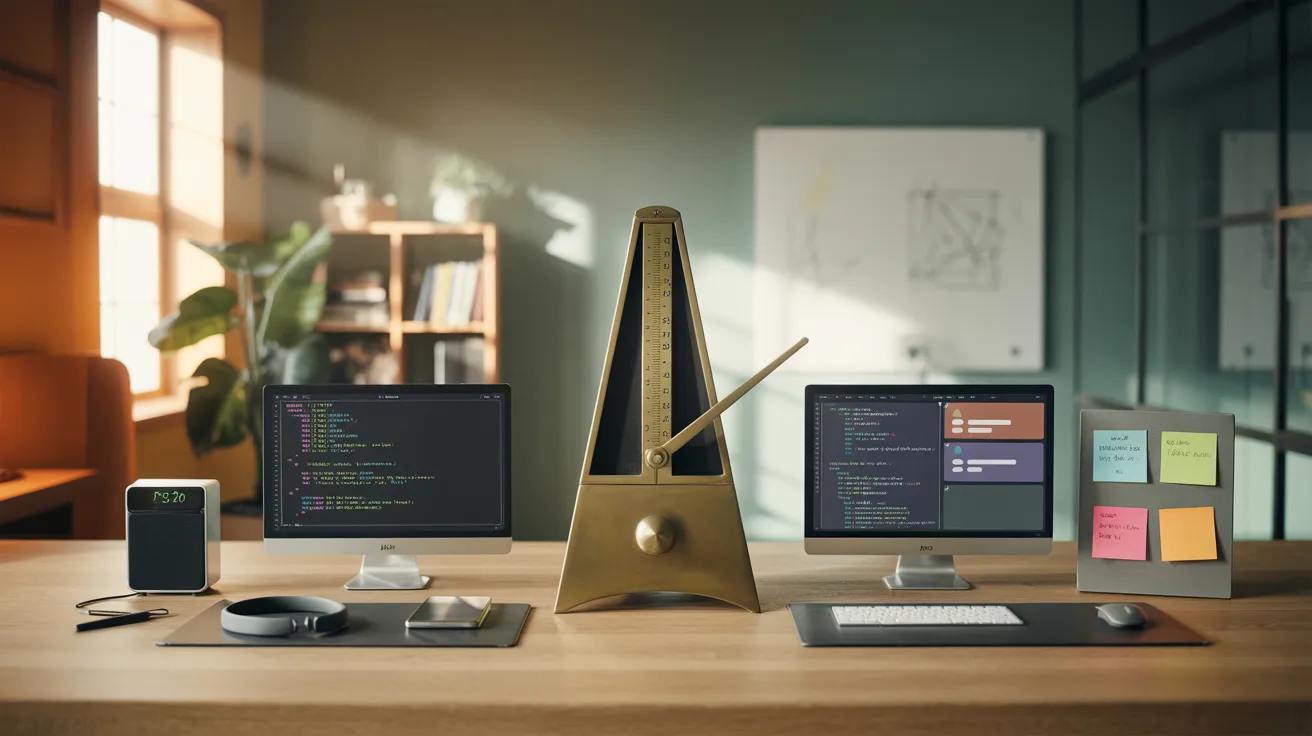How Hybrid Developers Balance Deep Work and Collaboration (Productivity Insights)

Hybrid work sounds like freedom until you realize it can easily become chaos.
Some days, developers are deep in code at home, fully locked into their flow. The next day, they are in the office, jumping between stand-ups, quick syncs, and endless Slack pings.
In our team, the meaning of Productivity looked different for everyone, and yet, the output didn’t always match the effort.
This being the point of our attention, we wanted to understand the science behind focused work and collaboration.
How can Hybrid Teams Protect Their Deep Work Without Losing Collaboration?
To find the rhythm and flow in our office, we started by observing the work patterns of our teams. Why is their productivity high when they are working, and why is it not the same when they are coming to the office?
Here, we leveraged employee monitoring software to watch how our hybrid developers worked without judging them.
When someone was coding from home, they had hours of uninterrupted focus. But once they stepped into the office, that flow used to get broken. Meetings, quick questions, or just the buzz of teamwork pulled them out of flow.
So instead of forcing a “one-size-fits-all” productivity rule, we asked the team to define their own system.
They mapped their ideal deep work hours, marked their best times for collaboration, and synced calendars around those blocks.
Stay on top of tasks with seamless progress tracking
Silence Started Getting Louder In The Office!!!
Instead of all-day pings, they preferred blocked active hours. Even unusual meeting calls started dropping.
We noticed there were fewer interruptions in work between the team members, and here’s what they settled on for them:
- Integrated the productivity tool with their project management software to make every task visible to everyone.
- Shifted completed tasks directly to the next person’s to-do list without directly knocking for reviews.
- Let each member work on their part during their own focus block.
- Stopped waiting for responses or approvals in real time.
- Maintained a steady work rhythm without disturbing others’ flow.
…and what was more effective was that they followed the same rules for both office and at home. Therefore, no matter where they have been working, they were able to follow that rhythm.
Optimize workflows with smart task scheduling
The Quiet Rhythm That Sped Everything Up

Without constant chatter or mid-focus interruptions, everyone had more mental space to think and create. And within a few weeks, we started noticing:
- Faster project delivery: Tasks moved smoothly from one person to another.
- Clearer ownership: Everyone knew what they were responsible for and when to pick things up.
- Fewer revisions: With more focused time, the quality of work improved.
- Better energy management: No one felt drained at the end of the day.
- Consistency in outcome: Consistency in productivity during office or home office remained the same. They were able to maintain that flow without legging.
Protect the Focus and you are ready to shine
Seeing the change in real time, it became clear why hybrid teams struggle without structure. We once thought maybe in-house teams work more hours at home rather than in the office. Instead, it was all about protecting focus and making collaboration purposeful.
By giving developers space to work deeply, while using simple tools to track progress and hand off tasks without interrupting others, we noticed a huge improvement in both efficiency and morale.
The office felt less chaotic, and the team’s output finally matched the effort they were putting in.
Ensure uninterrupted focus with smart monitoring
Closing Thoughts
Hybrid work doesn’t automatically mean freedom or productivity.
It works best when teams protect their deep work while making collaboration intentional. By setting focus blocks, using tools to track progress, and handing off tasks instead of interrupting each other, our developers found a rhythm that matched their effort to real results.
The lesson is simple: respect focus, structure collaboration, and trust your team. When you do that, productivity soars and everyone actually enjoys the workday.